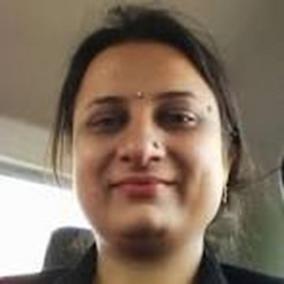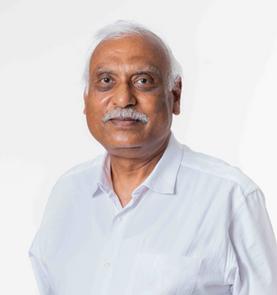
SCHOOL OF NATURAL SCIENCES




S C H O O L O F N A T U R A L S C I E N C E S
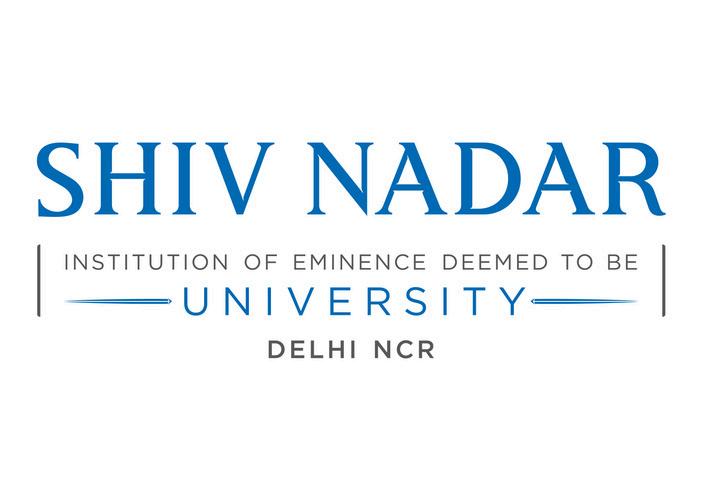 Dr. Ajoy Kapat
Dr. Ajoy Kapat
Radical Chemistry & Catalysis Laboratory
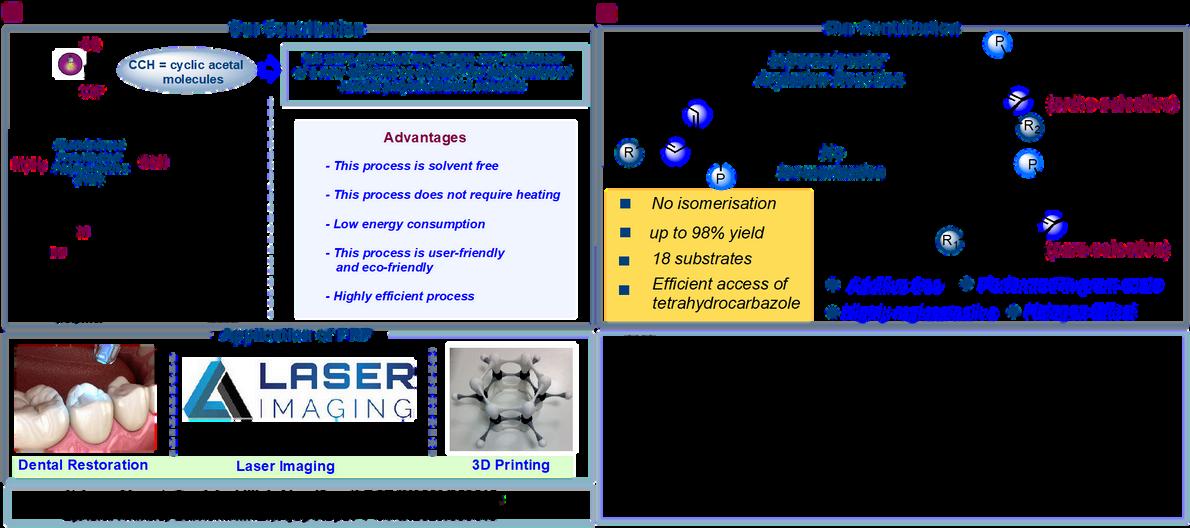

S C H O O L O F N A T U R A L S C I E N C E S

Project Title I: Enantioselective C-H halogenation using transition metal complexes of amido-oxazoline ligand
Project Title II: C-H bond halogenation using water soluble Ni(II) biguanide complexes
Halogenation of unactivated strong C(sp3)-H bond under mild conditions by direct means is extremely difficult for the synthesis of biologically and pharmacologically important organic compounds. In Proposal I, novel amido-oxazoline ligands were designed by introducing amido nitrogen with chiral oxazoline ring in the ligand framework for Mn, Fe and Ni centers.This ligand system is oxidatively robust and is carrying enetionselective C-H halogenation with high TON. In Proposal II, water soluble Ni(II) biguanide complexes successfully carried the C-H chlorination of series of hydrocarbons (cyclohexane, toluene, ethybenzene, adamantane, metylbiphenyl, nhexane). Exclusively chlorinated products (TON: 680 ± 60 for cyclohexane) were obtained without any hydroxylated products, thus mimicking the activity of halogenase enzyme.
Funded by SERB-DST: CRG/2022/001576 dated 4th January, 2023

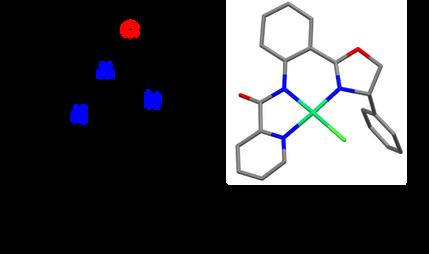

S C H O O L O F N A T U R A L S C I E N C E S

Research Lab: Ultrafast Spectroscopy & Chemical Dynamics
Synopsis of research work:
Solvent-solute interactions play a crucial role in steering chemical reactions in solution. We seek to understand how the dynamics and intermolecular interactions in pure as well as multi-component chemical environments influence chemical reaction occurring into them.
Research areas:
Excited state proton transfer and electron transfer dynamics, Structural dynamics of deep eutectic solvents, ionic liquids, Time-resolved fluorescence, Molecular dynamics simulation
Recent publications:
•B Guchhait*, C A Tibbetts, K M Tracy, B M Luther, A T Krummel, J. Chem. Phy., 2020, 152, 164501.
•F Novelli, B Guchhait, M Havenith,Materials, 2020, 13, 1311.
•Sushila, R Siddiqui, S Patra, K Shivam, A Sil, B Guchhait, H Tian, R Kataria, S Goswami, P Venugopalan, R Patra, Inorganic Chemistry, 2022, 61, 11484.
•A Sil, R Bhati, S Das*, B Guchhait*, J. Mol. Liq., 2023, 388, 122761.
•S Alvi, A Sil, S Maity, V Singh, B Guchhait*, Rashid Ali*, ACS Omega, 2024, 9, 9098.
•P Sharma, S Naithani, V Yadav, Sangeeta, B Guchhait, S Kumar, T Goswami, Sci. Total Environ, 2024, 920, 171043.
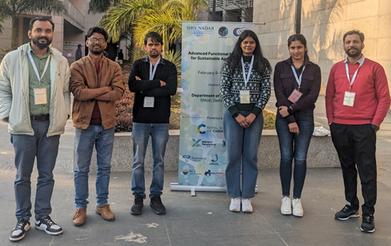
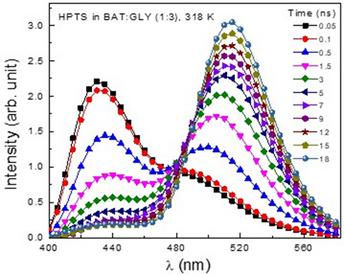
S C H O O L O F N A T U R A L S C I E N C E S

Harnessing Organic Triplet Energy
Ray’s research group developed
•Single-component based White Light Emitter for WOLEDs (J. Phys. Chem. Lett. 2023, 15 (11), 3135–3141) (Nature Indexed Journal).
•Photothermally Reversible Triplet Harnessing for Data security and Solar Energy
Storage (J. Phys. Chem. Lett. 2024, 15 (11), 3191–3196) (Nature Indexed Journal).
(Two Nature Indexed papers in a single volume and same issue)
•Thermally Enhanced Phosphorescence guided Delayed Fluorescent Emitter for OLEDs (J. Phys. Chem. B 2023, 127, 9833-9840).
•UV Phosphorescent Emitters for UV OLEDs (J. Phys. Chem. A 2024, 128, 581–589).
•Thermally enhanced delayed fluorescent emitters for thermal sensing (10-350 K) (Patent submitted and Manuscript under review)
•Delayed Fluorescent Emitter with Energy Inversion of Singlet and Triplet (Violation of Hund’s Rule) (Manuscript Submitted).
•Triplet active 3D Macrocyclic Sensitizers for sensing and photocatalysis (Study underway).

S C H O O L O F N A T U R A L S C I E N C E S

Electrocatalysis for sustainable energy generation
1.Single and diatom catalysts for O2 reduction reaction: We have used the electronic structure theory and computational techniques, to understand the interfacial properties of single and diatom catalysts for O2 reduction reaction.
2.Electrocatalysts for CO2 reduction reaction: Tuning the activity of conventional catalysts and defining their product selectivity using orbital engineering techniques to produce higher carbon-content products.
Representative publications:
(1)Angew. Chem. Int. Ed.; 2023, 135, e202311113.
(2)J. Chem. Phys., 2023, 159, 111001.
(3) ACS Catal. 2022, 12, 4818–4824.
(4) ACS Energy Lett, 2020, 5, 885-891.

S C H O O L O F N A T U R A L S C I E N C E S

Understanding molecular basis of functioning of cellular pathway
My research interests lie in understanding the conformational dynamics of biomolecular interactions and their association with pathological diseases, using computational and experimental tools in synchrony. In my past research, I have explored molecular determinants of self-assembly of viruses, self-assembly of amyloidogenic proteins, and their perturbation by external excipients by utilizing a combination of bioinformatics, modeling, conventional and enhanced atomistic molecular dynamic (MD) simulations techniques. My current research is focused on understanding the functional basis of lysosome by constructing in-silico realistic lysosome machinery. In particular, identification of specific loci (protein-protein and protein-lipid) responsible for its functionality, exploration of signatures that bring alteration in disease patients, and identification of lysosomal modulators with therapeutic implications.
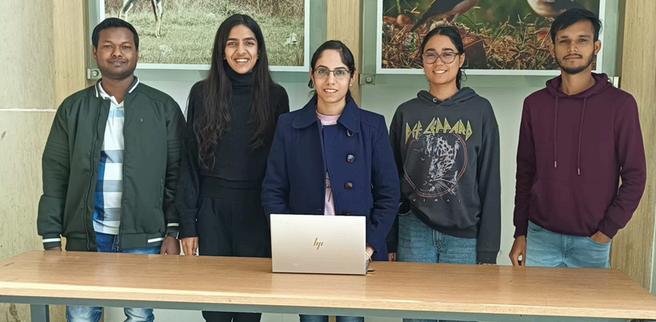
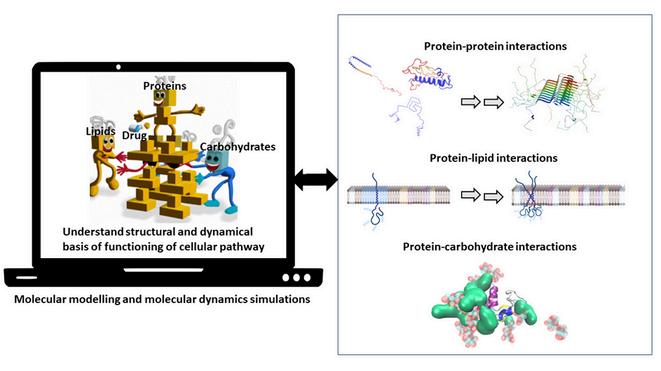
S C H O O L O F N A T U R A L S C I E N C E S

Organic Photoswitchable Ferroelectric and Piezoelectric Materials for Next-generation Smart Electronic Devices and Energy Harvesting
Project No: FGIR/2023/Proposal/29
Funding Agency: Shiv Nadar Institution of Eminence
PI: Prof. Parthapratim Munshi
Department of Chemistry, SNIoE
Co-PI: Dr. Meha Bhogra
Department of Mechanical Engineering, SNIoE
External Expert: Prof. R. Boomi Shankar
Department of Chemistry, IISER, Pune.
Purely Organic Multifunctional Molecular Materials with Ferroelectric and Negative Thermal Expansion Properties
Project No:CRG/2023/008038
Funding Agency: Science and Engineering Research Board, Department of Science and Technology, Government of India
Prof. Parthapratim Munshi
Department of Chemistry, SNIoE
Research Theme:
Organic Materials for Energy & Environment

Synopsis of research work: Due to their benign nature, flexibility, lightweight, costeffective production, easy processing, and least toxicity, organic materials with ferroelectric, piezoelectric, and unusual thermal expansion properties are preferred over inorganic materials for applications in flexible, wearable, biocompatible, reusable, economical devices. In these projects, we aim to discover organic materials for the preparation of electronic devices with precise control of thermal expansion and superior memory and energy storage capacity, e.g., sensor-based non-expansive memory devices. Our ongoing projects are expected to yield intelligent materials for environment-friendly applications, whichmay fulfil our societal needs.
S C H O O L O F N A T U R A L S C I E N C E S

Our group is dedicated to pioneering innovative solutions for synthesizing complex biologically active natural products and drug molecules. With a keen focus on developing unique synthetic methods and strategies, we embrace the challenges inherent in total synthesis. These challenges offer us a distinctive opportunity to push the boundaries of existing literature methods and uncover new breakthroughs in chemical transformation. In our pursuit, we aim to tackle current limitations in synthetic organic chemistry by charting new paths for asymmetric carbon-carbon and carbon-heteroatom bond-forming reactions. We will then rigorously validate our methodologies in the realm of complex molecule synthesis. Careful selection of our synthetic targets will serve as invaluable tools for studying biological systems and laying the groundwork for therapeutic development.

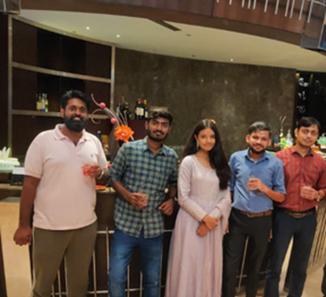
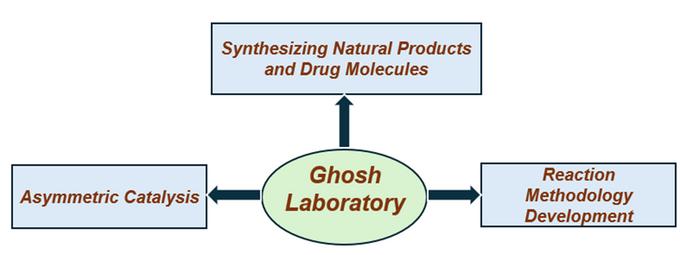


S C H O O L O F N A T U R A L S C I E N C E S
 Dr. Santosh K. Singh
Dr. Santosh K. Singh
Electrochemical Energy Research Group
EERL group research projects :
Demonstration of 3D printable electrodes for next-generation energy devices ("Nextgen-Cell") (SERB Sanction Order No.: SRG/2022/000223).
qFundamental electrochemistry and electrocatalysis mechanistic studies of electrocatalytic processes and high-performance electrocatalytic materials development.
qFabrication of next-generation electrochemical energy devices (fuel cell, water electrolyzer, flexible metal-ion battery, etc.)
Representative Publications
1. ACS Applied Energy Materials 2023, 6, 6111. 2. AngewandteChemie, 2022,134, e2022126. 3. Advanced Materials, 2019, 31, 1804297. 4. ACS Catalysis, 2017, 7, 6700. 5. Chem, 2017, 3, 846. 6. Advanced Energy Materials2016, 6, 1601189. 7. Journal of the American Chemical Society 2015, 137, 5955.


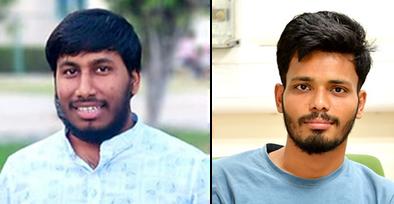



S C H O O L O F N A T U R A L S C I E N C E S
Sustainable organic reactions
Generation of carbenes and metal carbenoids under blue LED, mechanochemical and electrochemical energy sources without any catalyst. These carbene/ carbenoids are utilized in numerous organic transformations including, insertion, cycloaddition, cyclopropane formation etc.

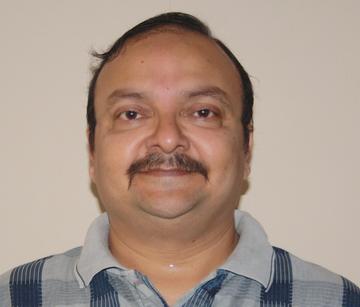

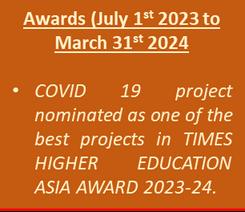
S C H O O L O F N A T U R A L S C I E N C E S
Chemical Biology: Mechanobiology,Biosensing,Bioelectronics

Chemical Biology: Mechanobiology,Biosensing,Bioelectronics
1.Extracellular vesicles, novel biomarkers for cancer: biophysical dissections using atomic force microscopy
2.Drug delivery and antimicrobial applications with synthetic and natural vesicles: comparative aspects
3.Mechano-elastic properties and electron transport through biomacromolecules: functional correlation
Selected Publications:
1.ACS Applied Biomaterials, 2024,DOI: 10.1021/acsabm.3c01108
2.Journal of Physical Chemistry B, 2024, DOI: 10.1021/acs.jpcb.4c00057
3.JACS Au, 2024,(Invited perspective article) DOI: 10.1021/jacsau.3c00611
4.ACS Applied Biomaterials, 2023,DOI: 10.1021/acsabm.3c00651
5.ACS Applied Materials and Interfaces, 2023,DOI: 10.1021/acsami.3c05031
6.Journal of Physical Chemistry B, (Young Investigator Issue), 2023, DOI: 10.1021/acs.jpcb.3c00147
7.The Journal of Physical Chemistry Letters, 2022, DOI: 10.1021/acs.jpclett.2c01629 (Highlighted by DST)
8.The Journal of Physical Chemistry Letters, 2020 , DOI: 10.1021/acs.jpclett.0c01018T (Highlighted by DST and DBT)
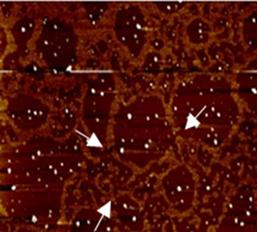
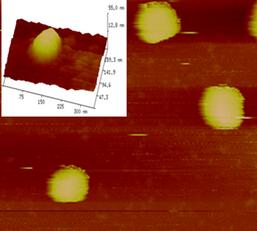

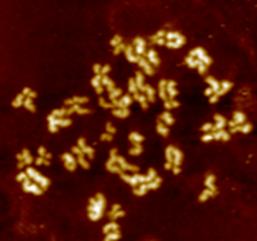
S C H O O L O F N A T U R A L S C I E N C E S
Dr. Anu Bala under the mentorship of Prof. Vijay Kumar

Computational Design of Low-Dimensional Energy Materials for Solar Cells and Optoelectronics
State-of-the-art ab initio calculations on mixed iodide–bromide perovskites doped with a small concentration of chloride show a reduction in the Pb–I bond lengths and tilting of PbI6 octahedra which leads to exothermic heat of mixing and higher stability of triple halide perovskites. A high concentration of Cl increases the risk of halide segregation. Doping of Cl also hinders the Frenkel defect formation. These results support experiments and help to understand the role of chloride in suppressing the halide ion mobility with only a slight increase in the band gap. Further detailed calculations have been performed on quantum dots of CsPbI3 which show platelet and cubic (1x1x1, 2x2x2, 3x3x1, 3x3x3, … QDs to be magic in agreement with observations. A. Bala and V. Kumar, Phys. Chem. Chem. Phys. 25, 22989 (2023); A. Bala and V. Kumar, submitted for publication.
